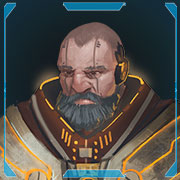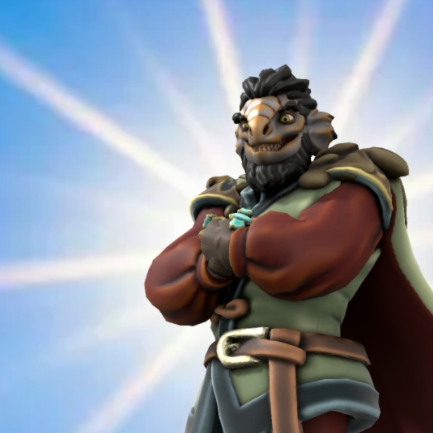Yokkerau: Wealth-Beasts
For what good is wealth that can't be flaunted?
Manufacturing process
Significance
Because those who wore it were so apparently wealthy, they were beyond reproach, even among equals. At the beginning of this trend, users asserted their dominance in the most uncouth ways possible, ranging from snide remarks to drunken behavior. The term "yokkerau," roughly translating to "that rich thing," was an insult and a rightful description of the wearer as an uncivilized beast. Critics could deny nobility as much as possible, but they could not deny wealth. Many nobles much preferred being called "rich" begrudgingly than being called "proper" derogatorily.
The growing number of socialites who adopted this trend incorporated this degradation as part of the Yokkerau culture, exaggerating their actions and going out of their way to exhibit rudeness, turning their gaudiness into bestial behavior. Yokkerau parties were held in the woodlands, and attendees were encouraged to eat meat with their mouths. In the gaudiest of these parties, the nobility would employ and incentivize servants to hunt down the attendees with nets. Both those who survived and the victorious hunters would be provided with the most lavish experiences imaginable: burial in gold, grand processions, a feast of foods from the other end of Wouraiya, and like events. In the most brutal of these parties, the strongest of the nobility would fight each other to the death. The wealth and power vacuums left behind by these parties brought entire economic regions to their knees, only to be reclaimed by the industrious underlings who lived there. While death on this scale might have been rarer than most, duels for a woman's affection, even deadly duels, could be expected in certain pockets of society.
"I trashed about in the net, screaming, "I am caught! I am caught!" Ah, the liberation! Truly, money well spent."
-Hagt II, head of the Tuhran House of G'tokar
Once the last well-to-do critics (save the royalty, bureaucracy, and military) surrendered to the trend, indecency became the norm. Ironically, the Yokkerau's rebellion made the nobility significantly more elitist and exclusive. Everyone behaved abysmally, so the only distinguishing factor between participants became the costumes they wore, most specifically the size and scope of their extravagances. The contrast was uncanny, however, between those who attended and those who could not.
When Welkwu, her children, and her disciples came to prominence as the economic kingmakers of Wouraiya, they looked down on the Yokkerau, not as the indignant whims of attention-seekers as their predecessors had decried beforehand, but as utter wastes of good capital in pursuit of an old-fashioned tradition. Fads this large could never go completely extinct; indeed, Yokkerau parties are still held in Keyrit and mainland Tuhra. However, the event is now a rarity, the Yokkerau costumes more likely found in museums than in homes.
Remove these ads. Join the Worldbuilders Guild













Nice article! I like the idea of using big animal shells to make an armour, as well as the idea of covering them in precious metal as a status symbol :D. I also really love the history surrounding the costume and how all the wearers just use it as an excuse to behave terrible XD I'm wondering about the size and shape of the weroiki shells. Are they spherical or rather flat? I just have a small remark: I was a bit confused at the beginning of the article about what it was about and so I think it would help if you start the article with a breath description of what your costume element is — I.e. an armour made from big animal shells. Also this is more of a personal choice, but having either a short description, a tooltip or a mouse-hover snippet for some elements like weroiki would help make sense of what you're talking about without having to click to read another article, which I personally find disruptive and confusing.
I'm grateful for your appreciation! My personal interpretation of a weroiki shell is what would happen if the back of a smaller ankylosaurus was a single, solid shell: a little ovular, a little curved, and slightly smaller than a human (the largest going from the neck to the knees). As per your request, I wrote a brief summary at the beginning to explain what the Yokkerau was. I'm not as well-versed in tooltips or mouse-hovers, and most of the subjects highlighted seem too lengthy and tangential to warrant small blips of text. Regardless, I'm glad you liked it, even with such a beautiful article as yours to compare!
Thanks :D I like you intro summary - and I forgot to say earlier, but I also love the quote you have, it's a fun one XD Mouseover snippet, are linked to other articles. To make one you have to go edit the other article. In the "design" tab, you have a box called mouseover snippet. Having a one sentence description there is really helpful and can incite people to click if they want to know more. To use tooltips, you have to write [ tooltip:The info you want to appear when you put the mouse cursors over the word ]The word you want to appear in the text[ /tolltip ] but without the space next to the brackets.